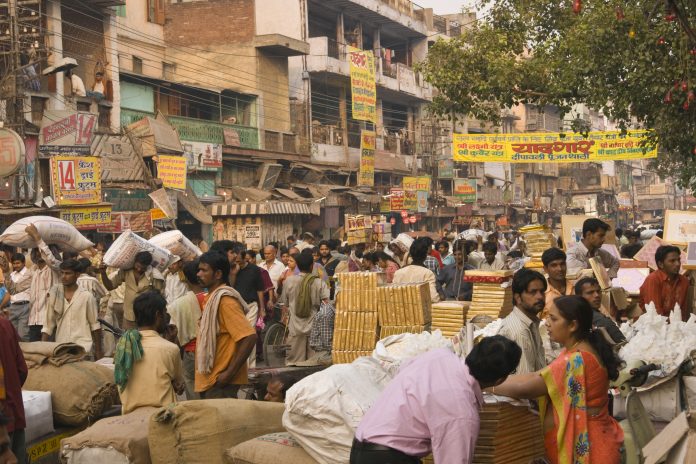The Global Centre for Clean Air Research (GCARE) found that lockdown reduced air pollution in Chennai, Delhi, Hyderabad, Kolkata, and Mumbai
A team of 10 interdisciplinary researchers from the University of Surrey’s renowned Global Centre for Clean Air Research (GCARE), including PhD students and post-doctoral researchers, have united to develop a rapid assessment of the impact COVID-19 has had on air quality.
Figures from the World Health Organisation show the ongoing pandemic has caused more than 477,000 deaths worldwide as of June 2020, 14,000 of which occurred in India. On 25 March 2020, a complete lockdown of internal and external boarders together with social isolation measures came into effect in India, affecting the lives and mobility of its 1.3 billion population.
As early as April 2020, the air-clearing impact of COVID-19 lockdowns had been witnessed with joy across the Asian continent – especially those with respiratory health problems. Here is a comparative piece that shows the visible differences in the air, and documents reactions of city-dwellers, including Delhi.
Professor Prashant Kumar, Director of GCARE at the University of Surrey, said:
“COVID-19 has had a devastating effect on the lives and livelihoods of billions across the world. This tragic global event has allowed us to quantify the impact that human activity has had over our environment and, in particular, our air quality.
What did the research team use to measure pollution?
In this recent study, published by Sustainable Cities and Society, researchers from Surrey’s GCARE studied the levels of harmful fine particulate matter (PM2.5) originating from vehicles and other non-vehicular sources in five Indian cities – Chennai, Delhi, Hyderabad, Kolkata, and Mumbai – from the start of the lockdown period until 11 May 2020. The team analysed PM2.5 distribution and contextualised their findings against those from other cities from across the world. They also explored potential factors influencing differences between divergent concentration changes in different cities, as well as aerosol loadings at regional scale.
In their work, titled “Temporary reduction in fine particulate matter due to ‘anthropogenic emissions switch-off’ during COVID-19 lockdown in Indian cities”, the GCARE team compared these lockdown air pollution figures with those from similar periods of the preceding five years.
What were the results?
The results showed that the lockdown reduced concentrations of harmful particles across all five cities, from a 10% reduction in Mumbai up to a 54% reduction in Delhi. These reductions in PM2.5 were found to be comparable to reductions in other cities across the world, such as in Vienna (60%) and Shanghai (42%).
The team from GCARE also investigated the monetary value of avoided premature mortality due to reduced PM2.5 concentrations, and calculated that the reduction may have saved 630 people from premature death and $690 million in health costs in India.
The team point out that the present lockdown situation offers observational opportunities regarding potential control systems and regulations for improved urban air quality. An integrated approach might help in understanding overall impacts of COVID-19 lockdown-style interventions and support the implementation of relevant policy frameworks.
Professor Prashant Kumar further commented:
“While the reduction in PM2.5 pollution may not be surprising, the size of the reduction should make us all take notice of the impact we have been having on the planet. This is an opportunity for us all to discuss and debate what the ‘new normal’ should look like – particularly when it comes to the quality of the air we breathe.”
This work is supported by the NERC-funded ASAP-Delhi project (NE/P016510/1) and the EPSRC-funded INHALE project (EP/T003189/1).
It builds upon GCARE’s previous work into the efficacy of odd-even trials in Delhi, key pollution challenges of land-locked Delhi and other Indian megacities and proposing mitigation strategies to tackle the issue, a spatial distribution mapping method of pollutants across Delhi, and on their most recent work on a long-term assessment of ambient particulate matter and trace gases in the Delhi-NCR region.











